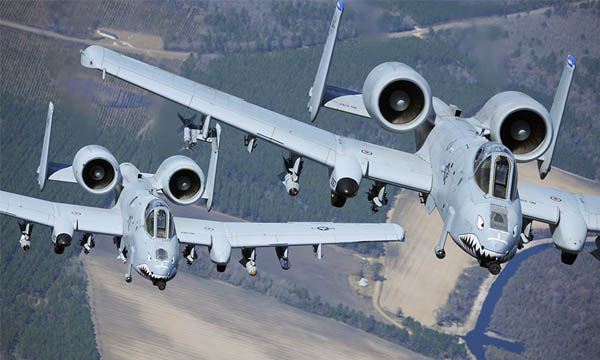The entire US Air Force A-10C Thunderbolt II fleet is about to be upgraded to the "Suite 10" standard. This is a brief look back at the aircraft, which has been widely publicized for exactly 31 years and the start of Operation Desert Storm.
The USAF's solution against Soviet armor
In the midst of the Cold War, the US Air Force is developing a rugged, armored aircraft that specializes in tank destruction: the Fairchild A-10A Thunderbolt II. This development is particular because the project starts with the creation of the General Electric GAU-8/A Avenger gun around which the aircraft will be built. The gun is composed of 7 tubes of 30 mm, capable of destroying any vehicle, including the armor of the forces of the Warsaw Pact and its allies.
The U.S. Air Force will receive the first aircraft in March 1976 and it is during various deployments that it will confirm its robustness: its engines were spaced, allowing a missile to destroy only one while allowing the other to remain in working order. Its drifts hide partly the heat emitted by the engines to be less detectable by the infra-red auto-director of the MANPADS. The pilot is also protected by a half-ton of armor and the tanks have a self-obstructing gel that can be used to patch holes. Finally, its airframe is designed to allow an emergency landing while protecting vital parts of the aircraft.
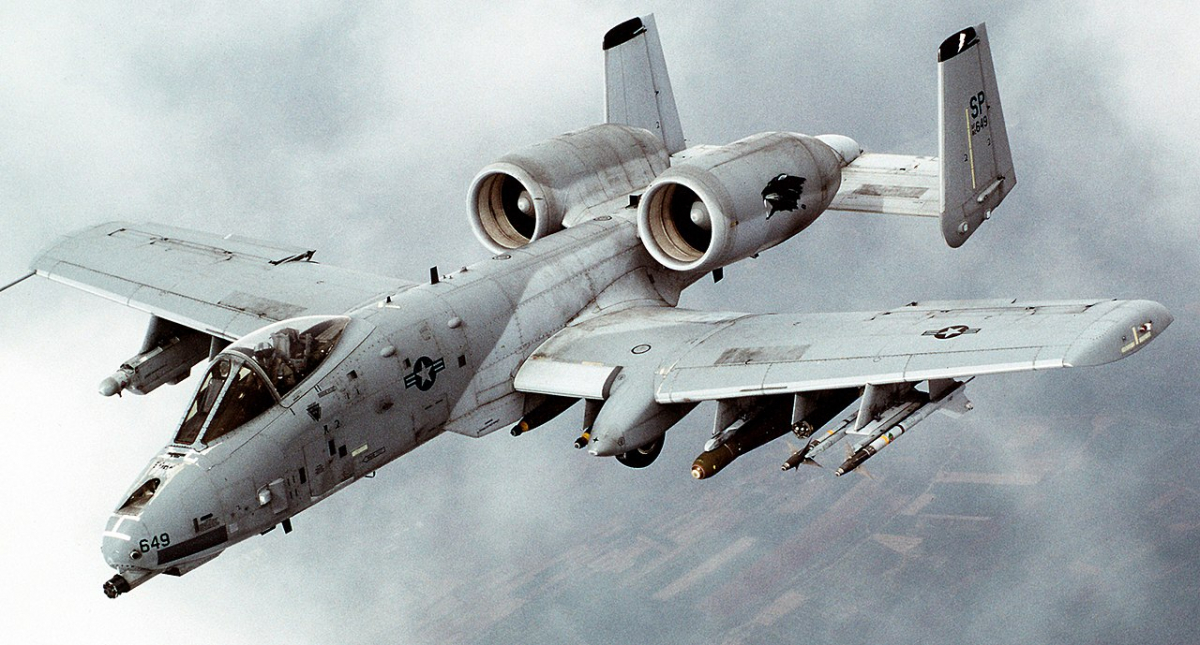

From tank killer to ground troops' best friend
The A-10, however, would not be able to demonstrate its tank-killing capability for the first time until Operation Desert Storm in Iraq in 1991. In fact, it was during the first days of the invasion that the A-10 earned the nickname " ground troops' best friend " : during the first days of the invasion, ground troops could request support from any aircraft present in the area of operation in order to obtain air support (so-called close air support or CAS missions). Seven days later, between 80 and 90 percent of air support requests were made to obtain A-10s.
This high percentage is explained by its excellent low-speed maneuverability, which allows it to rival or even surpass some more modern aircraft where an F-18A had to make several passes over a target, an A-10 made only one.
The aircraft's pilots were also considered more hardy, and it was not unusual for them to pull out a pair of binoculars over the action area, whereas pilots of other "more modern" aircraft types focused more on their electronic displays and sensors.
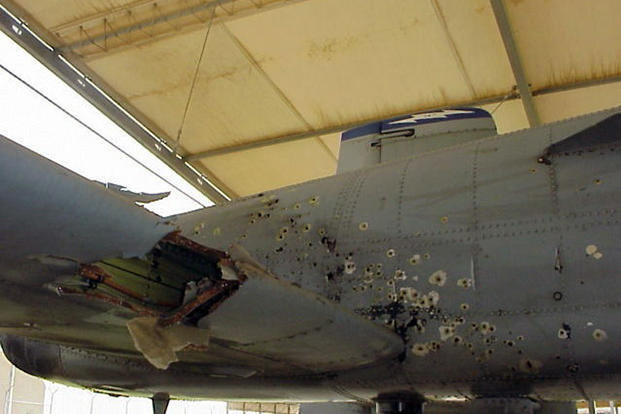

From the following wars (Balkans, Afghanistan, Iraq in 2003), the aircraft was used more as a close support aircraft thanks to its large bomb-carrying capacity and cannon rather than as a pure tank killer.
An end of career narrowly avoided
Since 2010, many debates within the American political class have almost ended the career of this aircraft. Indeed, many considered the aircraft as too old, to be replaced by the now ubiquitous drones, but especially by the F-35 which must officially take over the CAS mission. The aircraft is also considered less "prestigious" for US Air Force staffs compared to higher generation aircraft, and quite distant from Air Force doctrines, more oriented on air superiority or deep bombing missions.
The F-35A was finally never able to completely replace the A-10, its problematic development having taken longer than expected and its underpowered engine reducing its maneuverability at low speed. Parliamentary and GaO (U.S. Court of Auditors) reports have furthermore supported the retention of the aircraft, as its operating cost today is 6 times lower per flight hour than that of the F-35, making it possible to offer much higher flight permanence for a much lower cost.
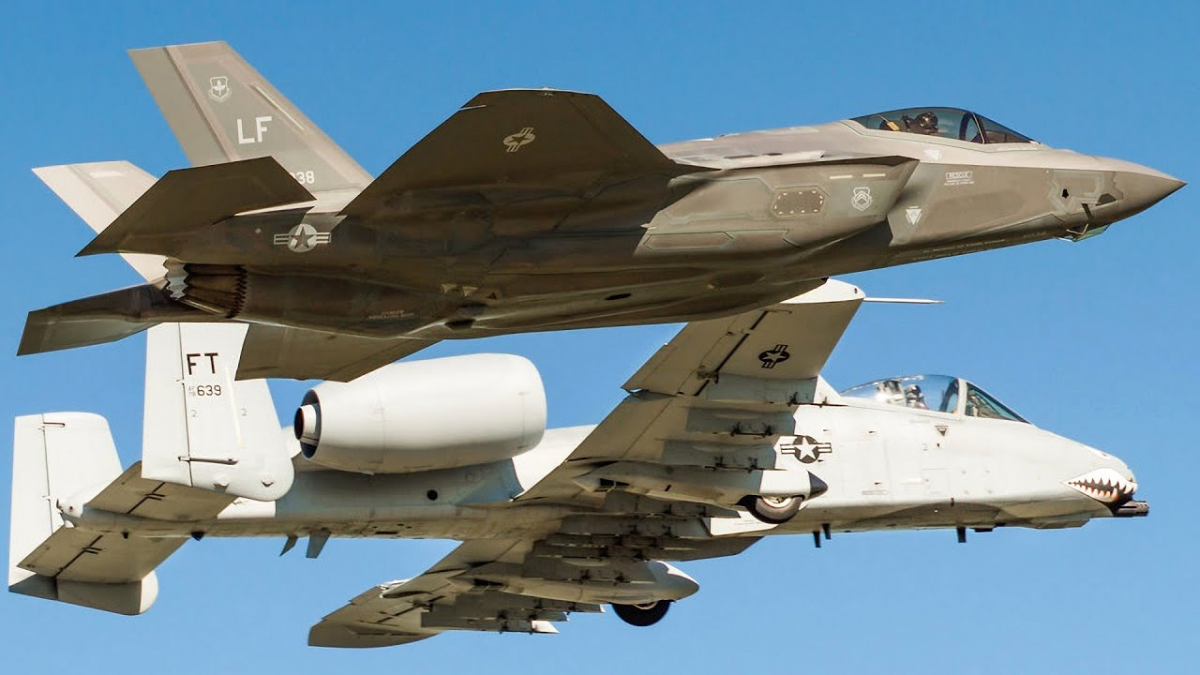

While Air Force Secretary Frank Kendall has again reiterated his demands to enact the retirement of the A-10C fleet from the U.S. Air Force fleet in early December 2021, the Senate has just expressly prohibited the retirement of any additional examples in its 2022 budget (see our detailed article on the DoD 2022 budget).
The solution: constant improvements
So the aircraft is improved in stages. In 2005, the A-10As were modernized and converted to the standard that would become known as the A-10C, featuring an upgraded cockpit (known as the glass cockpit), a precision weapons-carrying capability as well as a laser designator. Beginning in 2008, the A-10 fleet is receiving new wings to strengthen the aircraft's structure and extend its life expectancy beyond 2030.
The A-10Cs are currently receiving "Suite 10," which will allow the pilot to engage multiple targets with three different weapons, all in one pass. This upgrade - the most significant since 2005 - also includes the ability to use the AGR-20 APKWS (a semi-guided precision missile, based on the Hydra rocket), the GBU-31 guided bomb (a GPS-guided bomb weighing about a ton with penetration capability to destroy bunkers). The on-board electronics are also improved: increased resistance to GPS jamming, 3-D audio (the pilot hears the alert coming in the direction of the threat) or the integration of high-resolution screens. The last devices ported to this standard should be delivered very soon.
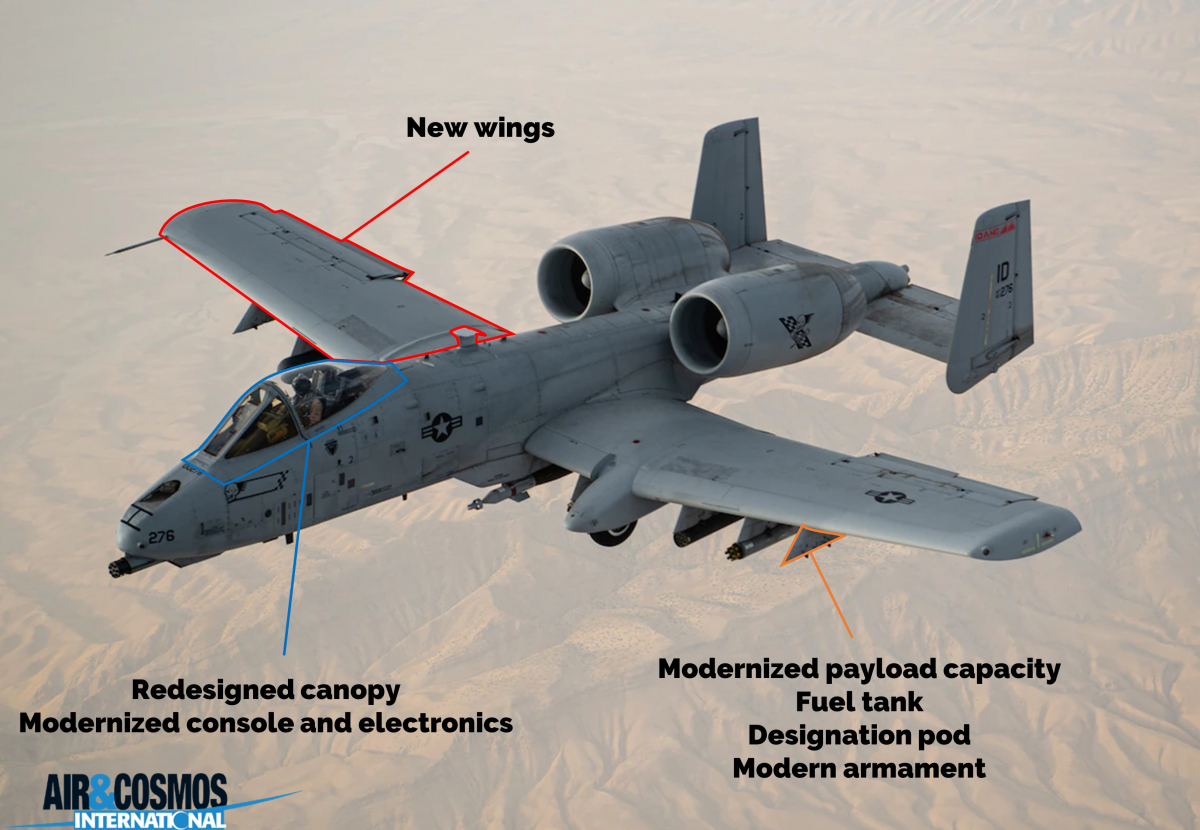

The list of developments is not finished, since it is now the "Suite 11" that is under development, for a start in the next few years. On the other hand, there are no plans to re-engineer the A-10C, as its current performance (up to 675 km/h, over a distance of 1,287 km while carrying 7.2 tons of weapons) is considered satisfactory, and the availability of parts is assured. Its successor, the F-35, is not yet considered fully operational, and its cost/efficiency ratio has no chance of surpassing that of the A-10. To the point of offering a new chance to turboprop aircraft such as the Textron Aviation AT-6 Wolverine or the Super Tucano, ideal for counter-insurgency missions. So expect the A-10C Thunderbolt II to be flying for many years to come.
The video (in French) below takes up the course of the invasion of Afghanistan, the passage concerning the A-10 is available at 12min30:
Découvrez cet article sur Air&Cosmos

